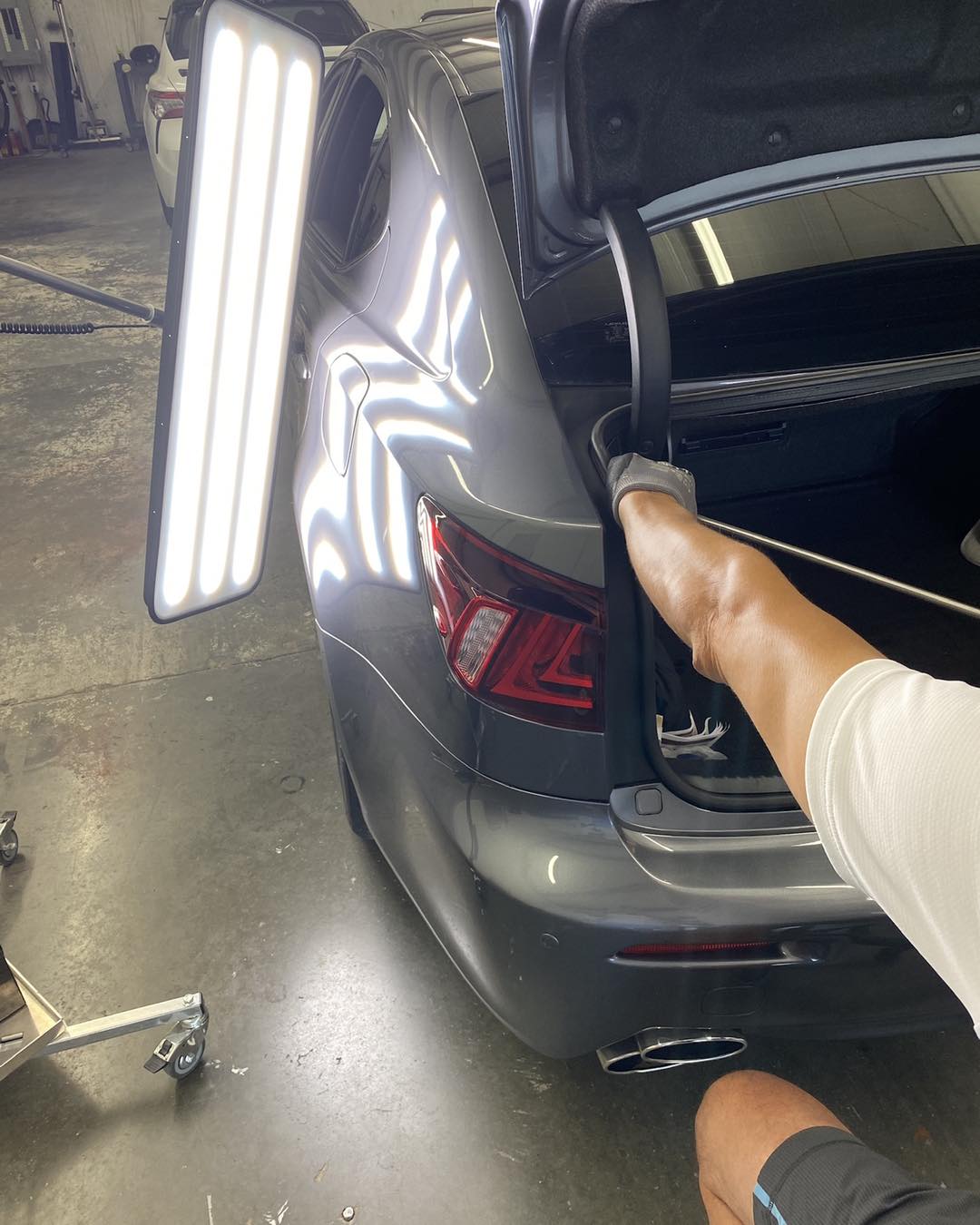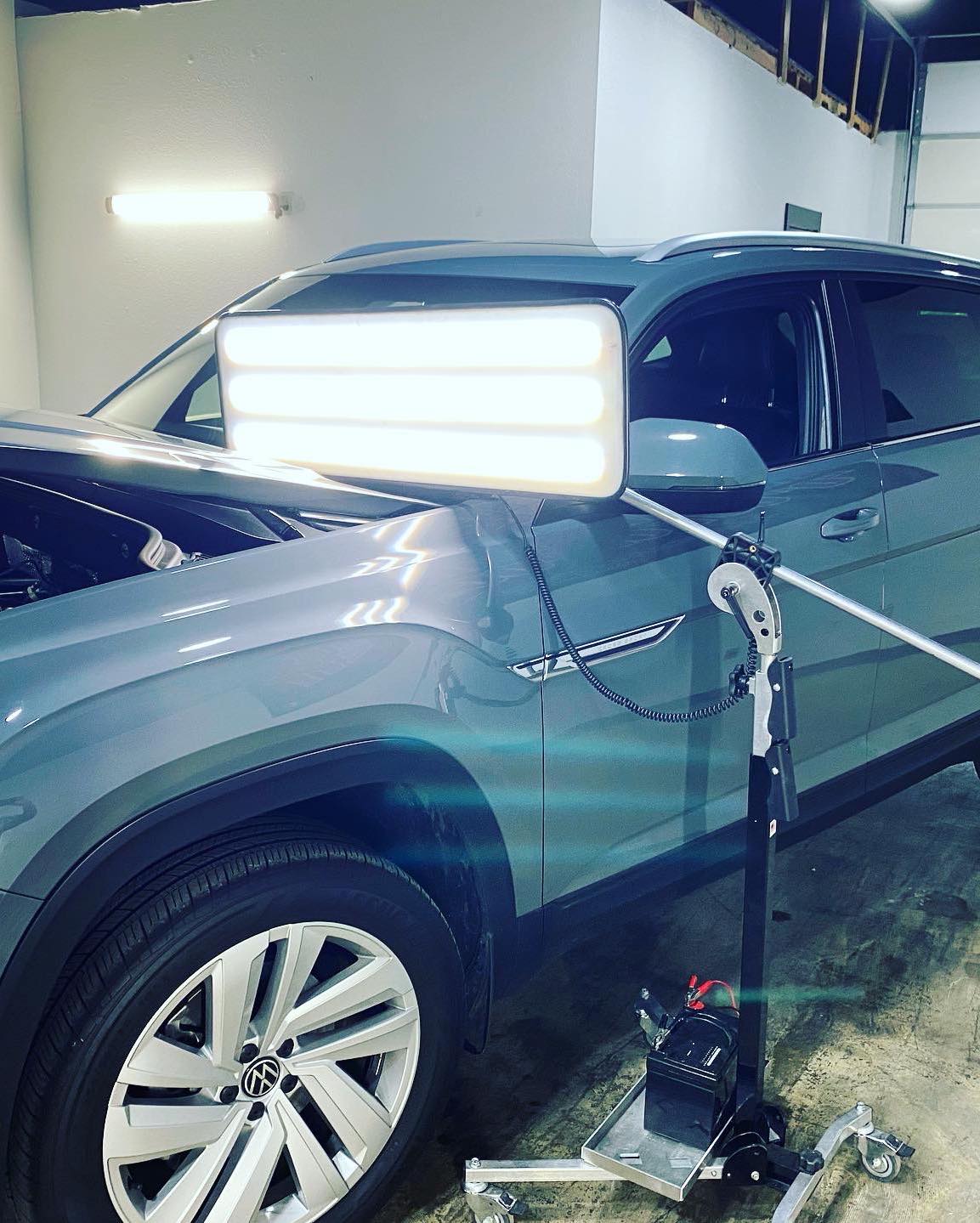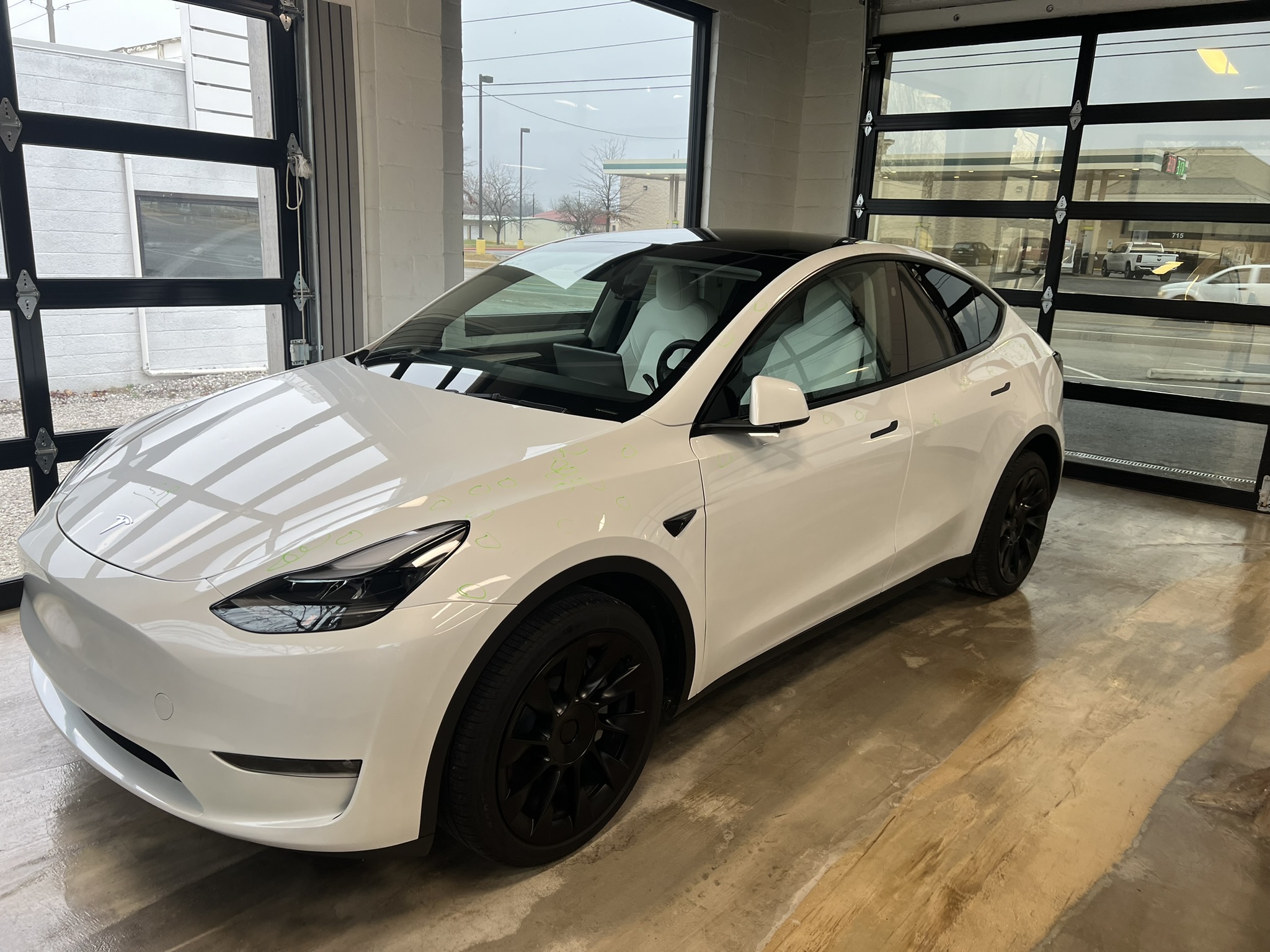Auto Hail Damage Repair
What is Paintless Dent Repair?
Also known as Paintless Dent Removal, this environmentally friendly repair method helps restore a vehicle’s appearance to its original condition faster and more affordably than other techniques. It can be used to remove car dings and dents, as well as auto body creases and hail damage.
We are confident in the quality of our work. That is why we even offer a lifetime warranty. You won’t have to pay out-of-pocket for any additional repair jobs needed after the initial fixes. We’ll also coordinate with your insurance provider, so you don’t have to worry about a thing.
We are happy to answer any questions you have and provide exceptional repair services.
What Can PDR Fix?
- Hail Damage: Paintless dent repair is highly effective in removing dents caused by hailstorms. The technique allows for the gentle manipulation of the metal panels to restore the original shape without compromising the paint finish.
- Door Dings: Minor dents and dings caused by impacts with doors, shopping carts, or other objects can be successfully repaired using paintless dent repair. Skilled technicians use specialized tools to access and massage the damaged area from behind the panel, restoring it to its pre-damaged state.
- Creases and Bodyline Damage: Paintless dent repair can also address creases and damage to body lines. With careful manipulation and precise techniques, technicians can restore the affected area to its original form, often without the need for repainting.
- Minor Bumper Indentations: In cases where the bumper has sustained minor indentations or dents, paintless dent repair can often be employed to rectify the issue. This saves time and money by avoiding the need for bumper replacement or repainting.
However, it’s important to note that paintless dent repair is not suitable for all types of damage, particularly collision damage. Here’s why it cannot repair collision damage:
- Paint Damage: Paintless dent repair relies on the intactness of the vehicle’s paint surface. If the damage has caused paint chipping, cracking, or peeling, paintless dent repair alone may not be sufficient. Repainting may be necessary to restore the damaged area fully.
- Structural Damage: In the case of collision damage where the structure of the vehicle is compromised, such as crumpled panels or frame damage, paintless dent repair is not the appropriate solution. These types of repairs typically require traditional bodywork and structural repairs.
- PDR is faster: Because no paint is involved, PDR can you back in your car on the road in no time.
- PDR is cheaper: By skipping the painting process, labor and material costs are significantly lower.
- PDR is eco-friendly: No paint means no harmful chemicals are released into the environment.
- PDR boosts resale value: A sleek and dent-free exterior will raise the car’s value in the eyes of potential buyers.
PDR or Body Shop: Which is the Better Choice?
How is PDR Priced?
Paintless Dent Repair (PDR) is a cost-effective method for repairing dents and dings without damaging the vehicle’s paint job. Although PDR pricing is largely determined by the service providers, coverage through an insurance company, based on the owner’s policy often plays a role. Not all dents are suitable for PDR and the technique’s applicability is determined by several factors:
Pricing Factors:
-
- Size of the Dent: Larger more complex dents typically cost more to repair due to increased labor and expertise.
- Location of the Dent: Dents in difficult-to-reach areas can incur higher costs due to increased time or special tool requirements.
- Number of Dents: While multiple dents will increase the overall cost, providers may offer discounts for fixing several at once.
- Type of Vehicle: Luxury or custom vehicles may require specialized care or pricier parts.
- Experience of the Technician: Highly skilled professionals might charge more, but the quality of their work can be superior.
- Geographical Location: Prices can vary based on cost-of-living differences between regions.
PDR Suitability Criteria:
-
- Location of the Dent: Dents on the edges of panels or near seams may not be accessible for PDR tools.
- Depth of the Dent: Extremely deep dents may stretch the metal beyond the capacity of PDR to repair.
- Size of the Dent: Larger dents can sometimes be repaired with PDR, depending on the skill of the technician and the specific tools used.
- Type of Metal: High-strength steel and aluminum panels can be harder to repair with PDR than traditional steel.
- Paint Condition: Dents with damaged paint (cracking or chipping) are not suitable for PDR as they could lead to further paint damage.
- Complexity and Nature of the Dent: Dents with extreme creases or folds, or those caused by high-impact collisions, may not be suitable for PDR.
A skilled PDR technician needs to assess the damage, considering these factors before recommending PDR or a more traditional conventional repair method. These conventional repair methods often involved filling the dent, sanding the area smooth, and then repainting the panel to match the rest of the vehicle, which can be a more time-consuming and costly process.
Conventional repair method pricing also has several factors.
Pricing Factors for Conventional Repairs:
-
- Extent of Damage: More extensive damage, like large or deep dents, damage to the car’s structure, or creased metal can increase the cost of repairs.
- Material and Labor Costs: These costs can vary widely, especially when parts need to be replaced or the damage requires more time to repair.
- Painting Requirements: Repainting is often necessary after conventional repairs, adding to the cost. The price can depend on the size of the area to be painted, the type and color of paint used, and whether blending is required to match the surrounding panels.
- Experience of the Technician: More experienced technicians or shops often charge more but may provide a higher quality repair.
Whether it’s PDR or a conventional method, a skilled technician needs to assess the damage and consider these factors before recommending a suitable repair method.
We Are EV Certified
When working on Tesla vehicles or other EVs there are more obstacles than you think. Due to the increased number of sensors and electrical instruments, just shoving tools behind the body panels or blindly disconnecting cables can be very dangerous to you and the vehicle! That is why we became an EV-certified repair destination!
Before working on your vehicle will properly disconnect the main battery and other necessary sensors to ensure our safety and yours during the repair process. Paintless dent repair should not be a difficult process due to the vehicle you drive and you should not have to worry if the repair will cause more damage! We are your PDR professionals, repairing dents, dings, and creases for over 25 years, and always keeping up with the newest technologies.
If you own a Tesla, Rivian, or other Electric Vehicle. Trust your vehicle’s dent repair with certified professionals!





